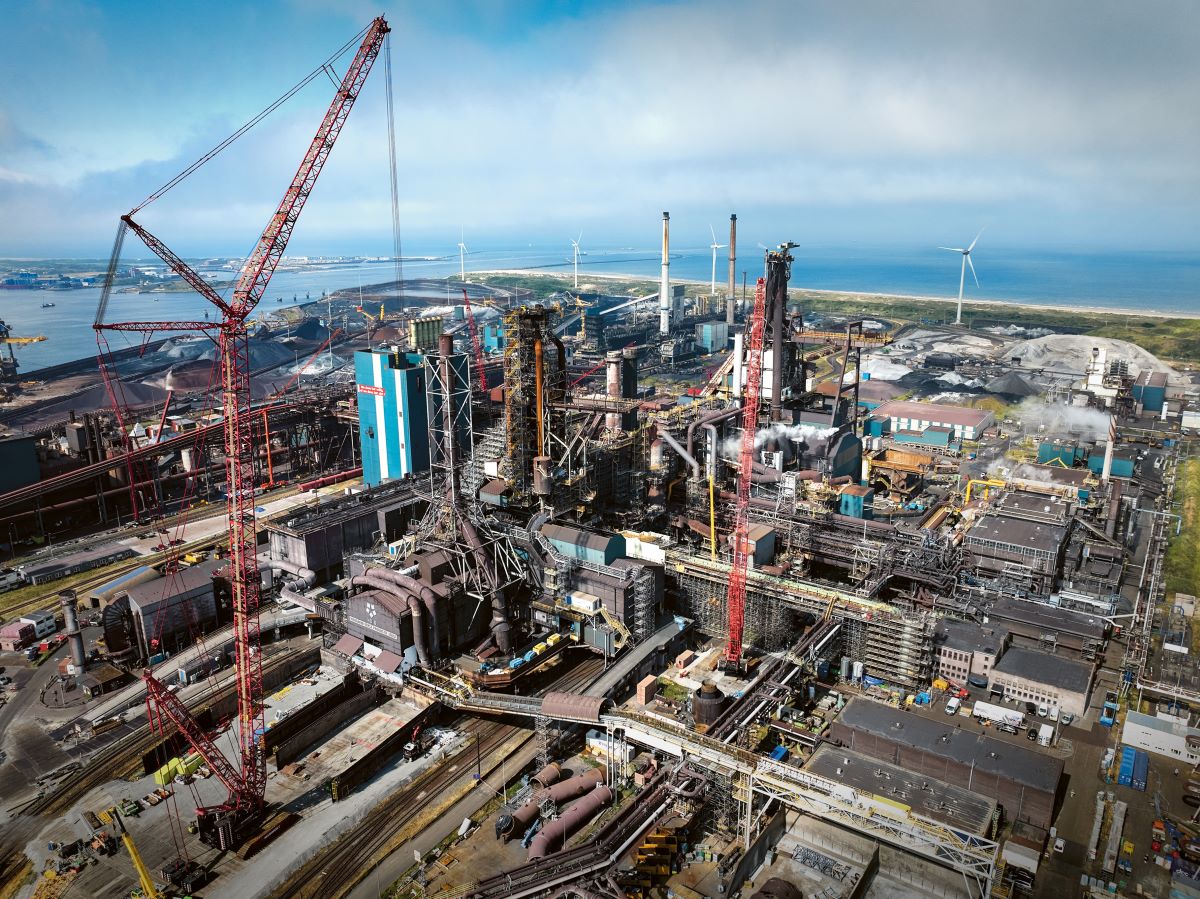The Netherlands – At blast furnace 6, Tata Steel has been executing a final significant upgrade and repair program from April 4. This 1967-built blast furnace was last shut down for significant maintenance in 1985. In the interim, a minor update was made in 2002.
Operating systems, all the refractory material—materials that must be able to sustain a temperature of roughly 1500°C—and the raw material supply are among the things that are replaced during the “standstill.”
The sixth and last blast furnace is being renovated. According to the Groen Staal plan, the blast furnaces would gradually be phased out starting in 2030. Tata Steel is transitioning to a DRI installation and electric furnace combo. Later this year, a specific plan for this transition will be decided. Blast furnace 6 will continue to operate until 2035 as a means of bridging the changeover phase.
Additional environmental safeguards
Various environmental controls will also be put in place during the restoration to cut down on emissions. The construction of a new low-emission loading system, the installation of new extractor hoods, the overhaul of the gas cleaning system, and the installation of a new extraction system in a specific area of the factory are all planned.
Preparation
The blast furnace must be empty before rehabilitation work can begin. That is a sizable task for some specialized businesses. To extract as much pig iron as possible, a hole was drilled in the blast furnace, for instance. Then, to cool the blast furnace, water was poured into it. The last slab of iron was smashed with explosives and removed after a hole was created in the oven to remove the remaining slag and coke using a shovel. The new refractory layer’s interior bricklaying couldn’t begin until that. In addition to the interior brickwork, the exterior steel cladding has also undergone some replacement.
At the end of August, blast furnace 6 will resume if all goes as planned.
Process
In a blast furnace, iron ore and coke coal are heated to produce pig iron. The coke and gas factories are where the coke coals are made. Prior to being used, the iron ore must be transformed into sinter (light pieces) or pellets (marbles). A mixture of sinter, pellets, and coke is cooked to extremely high temperatures in the blast furnace before being added from above layer by layer. Around 2500 °C is the temperature at the bottom of the blast furnace, when the iron ore is transformed into liquid pig iron. The temperature of this liquid pig iron is 1500°C. The liquid pig iron is transported to the steel mill where it is transformed into huge slabs of steel in special torpedo-shaped train cars that are coated inside with refractory material.





